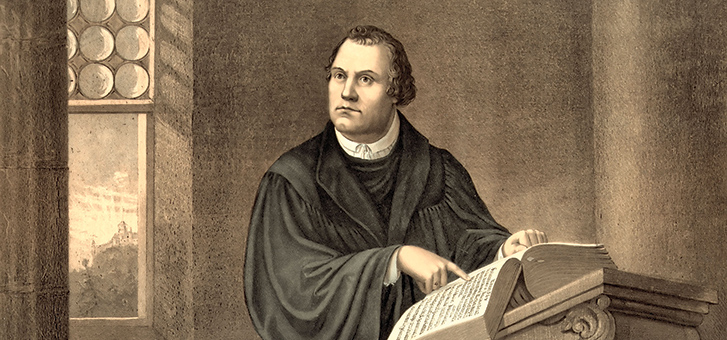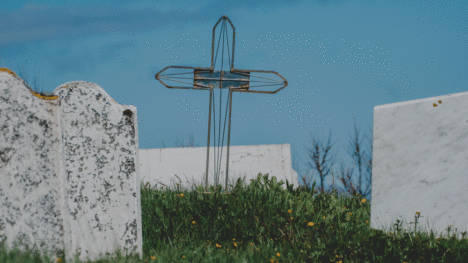The original soul sleeper
October 31, 2017

England during the 16th and 17th centuries—the peak of the Protestant Reformation—saw the rise of a group of people variously known as mortalists, as conditionalists, or, more specifically in their day, as soul sleepers.
They were called this because they rejected the traditional belief in the soul’s separate existence and innate immortality. Instead, they believed in the death of the soul as well as the body, although many of them, notably in the early years of the Reformation, didn’t go quite that far. They held that immortality derived from the work of Christ, personal faith in Him and the resurrection at the last day, and they considered death to be a sleep during which the soul was nonexistent or, in the less extreme view, unconscious though still alive.
Christian theologians and the general Christian population believed in
the immortality of the soul as early as the second century A.D. However, it wasn’t voted as an official Catholic doctrine until the Council of Vienne in 1312 as a reaction to continued philosophical assertions in some academic circles of the soul’s mortality. The council denounced as heretical and “inimical to the truth of the Catholic faith” certain ideas that appeared to question the superiority of the soul over the body and the possibility of its independent existence.
John XXII, who was pope from 1316 to 1334, held the view for some years that the departed souls of the righteous dead did not see God until after the last judgement. He is said to have written a work on this theme prior to his election to the papal throne. After becoming pope he continued to advance these ideas in sermons for some time, arousing considerable opposition, particularly from the theology faculty at the University of Paris, to the point that he was actually accused of heresy. Under pressure from his theological advisers to conform, he eventually withdrew his divergent views in favour of the more orthodox Catholic position, declaring that his earlier beliefs had been merely a personal opinion.
Two events in particular may be said to have precipitated a more definitive formulation of the medieval belief in the soul’s immortality and hence the later but consequent appearance of an alternative mortalist belief. These events were outcomes of the Council of Florence, 1438–1445, and the Fifth Lateran Council, 1512–1517, relating to the developing doctrines of purgatory and the immortality of the soul.
Few doctrines of the medieval church provoked such widespread opposition from the early Reformers and those who followed them than purgatory, the idea of an intermediate state between death and a future life where those who had died would undergo purification and punishment prior to the resurrection and the last judgement.
The abuses deriving from belief in purgatory were to become one of the major concerns of Martin Luther’s 95 Theses, with his open attack on the sale of indulgences and the “audacious” claim that souls could be released from purgatory thereby. Luther would ultimately conclude that the underlying doctrine of the soul’s substantiality and immortality was “a monstrous opinion” emanating from Rome’s “dunghill of decretals.”
In 1513 the Fifth Lateran Council dealt with the problem caused by the proposition that the soul was mortal, denouncing it as a “very pernicious error” and reasserting that each individually created soul is “truly, and of itself . . . immortal” and capable of existence after death prior to the resurrection.
Those who were soon to deny the soul’s immortality, both on the Continent and in England, could never doubt the importance of this doctrine to the entire structure of Roman theology or, perhaps, of the consequences which such denial might incur.
Luther’s views on the state of the soul after death, arising in large part from his respect for biblical authority over that of the church, began to appear in 1520. Luther argued that the church’s official doctrine of the soul as a spiritual but substantial substance and the “form” of the human body was only a papal opinion.
While this was clearly not yet an outright expression of the mortalism he was shortly to declare, it nevertheless demonstrated his profound unease with the prevailing doctrine. All the essentials of mortalism can be found in Luther’s writings, and most of them occur repeatedly: the separate existence of the soul, its unconscious sleep after death, its exclusion from heavenly bliss until the resurrection and the vital importance of the resurrection of the body and the reunification of body and soul at the last day as the way to immortality and eternal life.
The resurrection at the last day will terminate the sleep of death and bring to reality eternal life . .
In 1526, in his lectures on Ecclesiastes, Luther noted that the dead are “completely asleep” and do not “feel anything at all.” “They lie there not counting days or years; but when they are raised, it will seem to them that they have only slept for a moment.”
Commenting on Ecclesiastes 9:5, Luther said that he knew of no more powerful passage in Scripture showing that the dead are asleep and unconscious. Verse 10 was another text proving “that the dead do not feel anything,” since they are “completely asleep.” In his commentary on 1 Corinthians 15, Luther argued that the “true and eternal death” that was the case prior to Christ’s resurrection is now no longer death: “It has become merely a sleep.” And for Christ, “It is but a night before He rouses us from sleep.
Again, the saints who died in faith “died in such a manner that after they had been called away from the troubles and hardships of this life, they entered their chamber, slept there, and rested in peace.” For Luther, death is always a sleep, a time of rest and waiting.
However, Luther did view the soul as a separate entity that leaves the body at death. He said, “After death the soul enters its chamber and is at peace; and while it sleeps, it is not aware of its sleep.” In the lectures on Psalms, he states, “The crossing of Jordan is the departure of the soul from the body.”
Of the Old Testament patriarchs, notably Abraham, Isaac and Jacob, Luther said that each was “gathered to his people,” to rest, to sleep, to await “resurrection and the future life.” The same is true of all who thus sleep: “There is no doubt that those who have been gathered to their people are resting. . . . There is a place for the elect where they all rest. . . . The human soul sleeps with all senses buried, and our bed is like a sepulchre. . . . They rest in peace.”
Luther held that we cannot now know the exact nature of the intermediate state, but he was sure that the disembodied soul is “freed from the workhouse of the body.” Moreover, “it is sufficient for us to know that the saints in the Old Testament who died in faith in the Christ who was to come and the godly in the New Testament who died in faith in the Christ who has been revealed” are safe in the hands of God, “gathered to their people.” But “we do not know what that place is, or what kind of place it is.”
So for Luther, both body and soul rest after death, the body in the grave and the soul, still alive but asleep, in some appointed but undefined place, to await the last day.
The resurrection at the last day will terminate the sleep of death and bring to reality eternal life and, through the reunification of soul and body, the fullness of immortality for those who believe. In fact, Luther went as far as to say of the resurrection that it is “the chief article of Christian doctrine.”
As history progressed, however, coupled with the repeated attempts of its opponents to suppress mortalist teachings that eventually led it to become the belief of mainly left wing radicals, we get a hint of the answer to a question that has remained largely unanswered for 400 years or more. It’s this: Why did mainstream Protestantism, both in England and on the Continent, which in its formative years so emphatically repudiated what it considered to be the doctrinal legacy of the medieval church, retain what was arguably the central plank in the entire dogmatic and liturgical structure of late medieval Catholicism—belief in an immortal soul?
Adapted from Grounds for Assurance and Hope, by Bryan Ball (Cooranbong, New South Wales, Australia: Avondale Academic Press, 2015).









